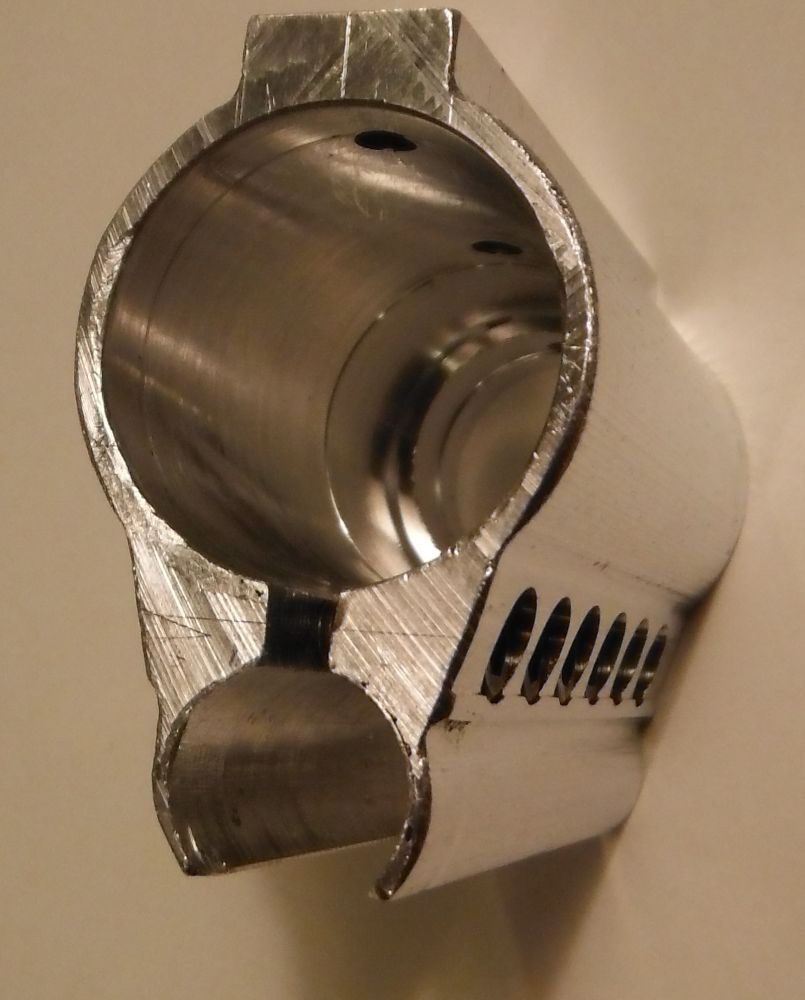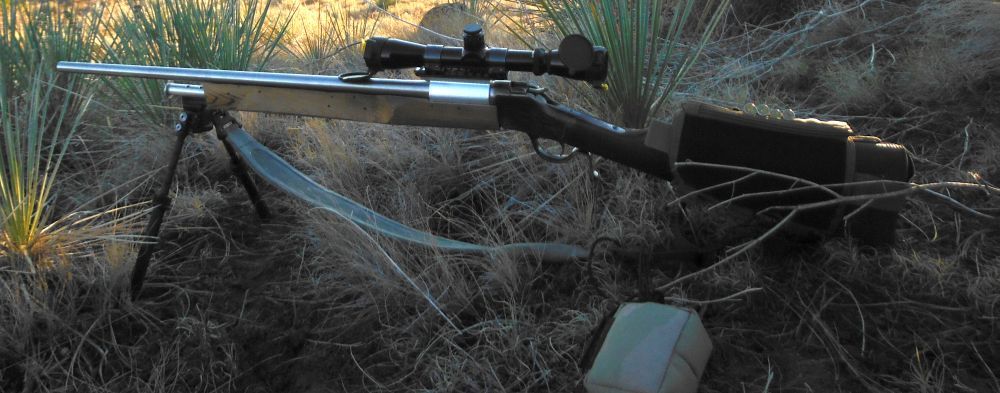Saskhunter comments about my question; "What difference is there between them that would make one react differently from contact with a stock's fore end compared to the other?" and my comments below each:
I don't know for sure, because you can't know. I assume you understand that two "identical" rifles will shoot different loads well. A specific gun will "like" one bullet/powder combination that another will shoot very badly. I don't know why.
If they're identical, they might shoot different loads well. But if one load shoots well in one, it'll shoot the same in the other. The ammo's put through two identical systems, so it will perform identically in each.
I assume you know that two "identical" rifles will get very different velocity numbers from the same load. I don't know why.
If they're identical, they'll get the same velocity. Ammo from each meets the same barrel dimensions in all respects, gets the same firing pin impact in all respects, and, if held in identical ways, they'll get identical velocity numbers. Diffrences only occur between different things. There's zero difference between identical things. The spread in bore and groove diameters as well as firing pin impact force across several rifles of the same cartridge, make and model will all have different muzzle velocities with the same load. And several people shooting the same rifle and ammo will each have a differnt muzzle velocity 'cause they all ain't holding the rifle the same way. I've seen as much as 60 fps spread in average muzzle velocity between me and a friend using the same rifle and ammo shot from a bench.
I assume you know about things like the Browning Boss system, and about those ugly barrel harmonic things you stick on the barrel and slide up and down to improve accuracy.
Yes, I know about both and the actual barrel whip cycles and freqencies the barrel's whip at. The BOSS system doesn not work like Browing says it does. The way they says it works is the most difficult place in the barrel's whip cycle to get bullets to leave at the same point in the muzzle's angular spread. And half the time accuracy would get worse; for example when the muzzle axis is on the down swing. It might help if the muzzle axis was on the up swing, but Browning doesn't mention that.
Those ugly thing sliding back and forth on barrels do work. Especially with rimfire match rifles where a lot of them are used. Very efficiently, too. Centerfire rifles typically don't benefit from them, but sometimes they will.
I assume you know that there have been bench rest shooters who actually glued their rifle barrels to the stock for the full length of the stock and got exceptional accuracy. (Google it).
Yes, and they do work. But those rifles are fired in free recoil; the rifle rests exactly the same way in a 3-point suspension system which is very repeatable. The pressure from the barrel is transferred through the stock to the front rest(s) the same way benchrest rail guns with a 6 to 12 inch block of split steel clamped somewhere about mid point on the barrel. People don't touch those rifles at all when they're fired except for one finger on their few-ounce trigger. These are a lot different than rifles held by their fore ends, pistol grips and hard against ones shoulder and behave differently, too.
Bolt action match rifles have been built the same way with that steel block glued into the stock's fore end; I've watched them shoot just as accurate as a conventionally epoxy bedded receiver with its barrel totally free floating.
I assume you know there are serious differences in barrel harmonics in a 25 pound bench rest rifle and say, a Win Ultralight. Barrel length, thickness, material, fluting, all have an unpredictable effect on accuracy.
Yes. But it's been very predictable since the early 1900's. Check out this web site about how the SMLE British service rifle had calculations made to explain its whipping barrel compensating for an 80 fps spread in muzzle velocity with .303 ammo. In the "View the Book" window, click on the format you want to read it in.
http://archive.org/details/philtrans05900167
Also, check out these links:
Fluted Barrel Analysis
22LR Rifle & Tuner
Esten's Rifle & Tuner
Light Rifle & Tuner
Barrel Harmonic Movie
Barrel Tuner Analysis
6PPC Barrel Dynamics
in Varmint Al's web site below:
http://www.varmintal.com/
I also know that barrel harmonic frequencies are multiples of the barrels resonant frequency. And a barrels resonant frequency it whips or vibrates at is different if both ends are free compared to one end screwed into a receiver that's bolted (or glued) into a stock. A given barrel in a rifle has a resonant frequency about one third what it does when both ends are free.
Note also that some modern 28 to 30 inch match rifle heavy barrels are more whippy (less stiff) than shorter, lighter weight hunting rifle barrels.
My experience is that free floating MAY improve accuracy; a pressure point MAY improve accuracy. The only way to tell is to try it.
A lot of commercial factory rifles may benefit from a pressure point somewhere up front between the fore end and barrel. But it won't be nearly the improvement in accuracy as properly epoxy bedding the receiver then totally free floating the barrel.
Every barrel is unique, and the only way to find out what it needs to be accurate is to experiment.
It's been proved many times that a good lot of factory match ammo will shoot sub 1/2 MOA at 600 yards in many top quality bolt action match rifles with different bore, groove and chamber dimensions. As long as the groove diameter's at least a few thouandths smaller than the bullet and the twist is right for the muzzle velocity and bullet, great accuracy will happen all the time. I've seen this happen too often when the same lot of ammo's been shot by top international marksmen in long range matches in all sorts of rifles, actions and stocks.
But there is no rule that free floating any given barrel will improve its accuracy..
There is one rule that always applies. As long as the barrel whips, vibrates, wiggles or whatever the same way for each shot, best accuracy is assured. The best way to achieve that is to have the barrel free of any variable external influnce on its behaviour from anything. A pressure point on the barrel from a rifle's fore end ain't gonna do that as long as some human's holding on to that fore end. There is one exception I know of that works, but is susceptable to how the fore end's held; read on.
Military match grade M1 and M14 match rifles have been clamped in accuracy cradles and test fired with known good lots of match ammo. The best of them would shoot darned near 1/2 MOA at 600 yards; takes about 1/4 MOA at 100 yards to do that. Yet their stock's fore end ferrule holding the barrel down with about 30 pounds of pressure that actually bends the barrel (and therefore the bore axis from there to the muzzle) down relative to the bore axis at the chamber. But it does so with exactly the same external force on the barrel from shot to shot so it's very repeatable. When the fore end's hand held in shooting positions, that has to be very repeatable else point of impact relative to the aiming point will change.



